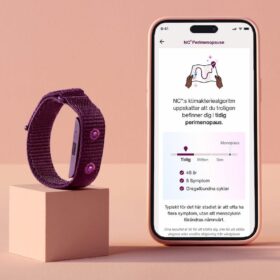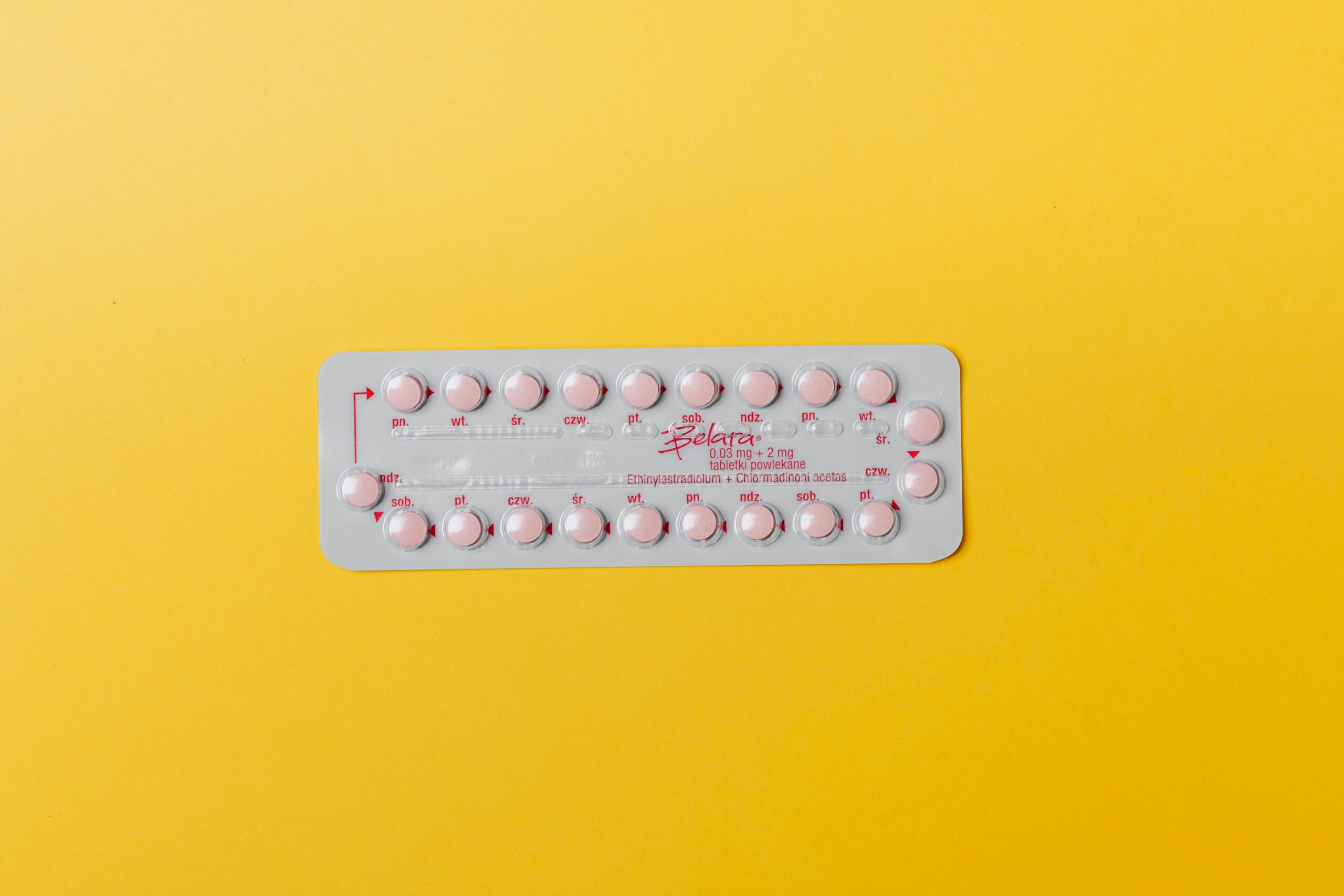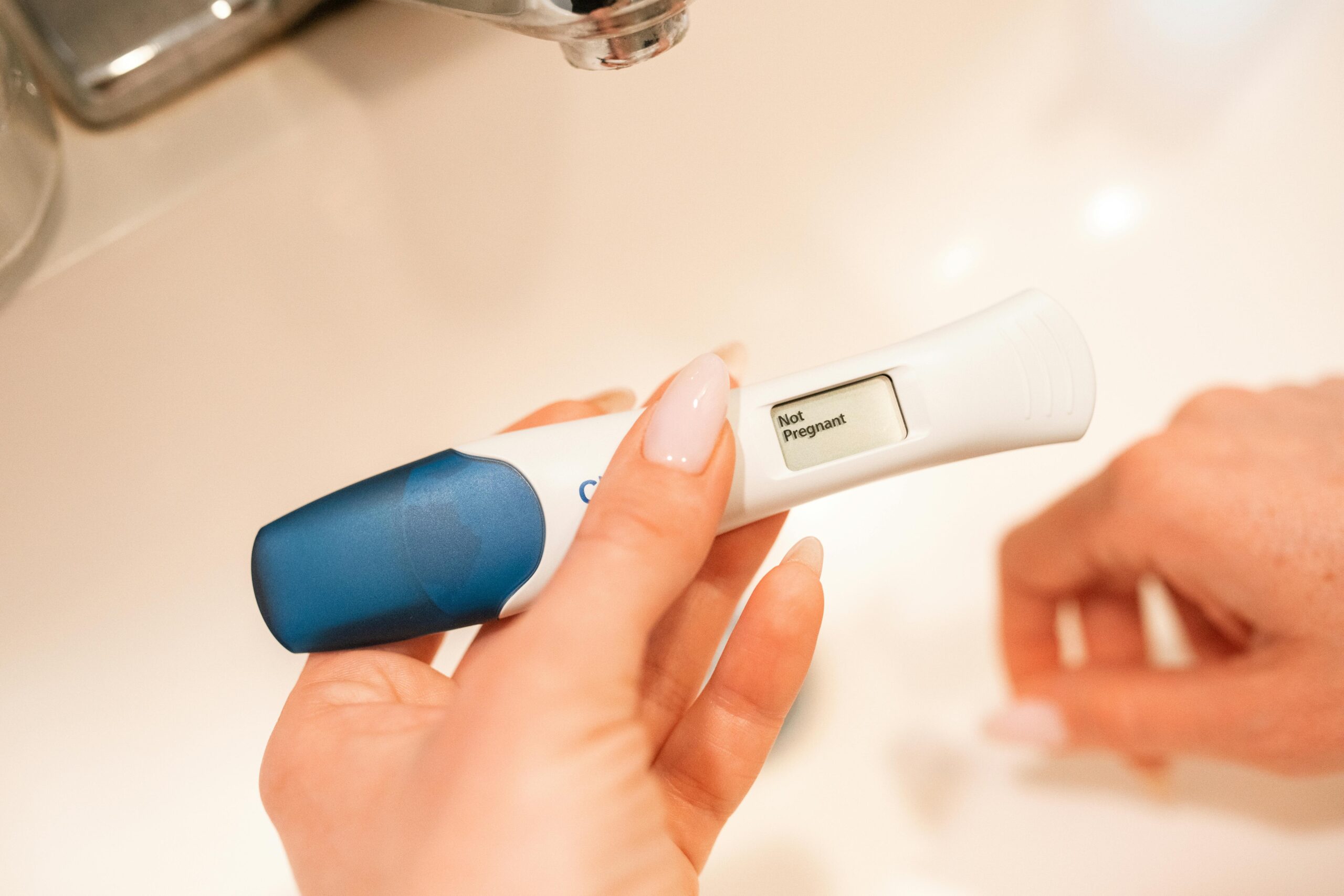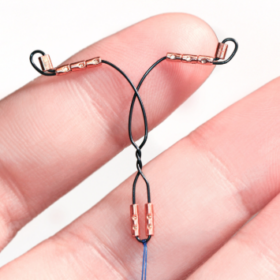
So you want to talk about… the vaginal ring
In this article
What's the lowdown?
The vaginal ring is a combined hormonal contraception method made of soft plastic that is placed inside the vagina
The vaginal ring is left inside the vagina for 21 days. Just like the combined pill, you then have the option of using the ring continuously or having a ring-free break of up to 7 days, during which you have a withdrawal bleed
If the vaginal ring comes out and has been out for less than 48 hours, it can be washed in lukewarm water and reinserted with no additional contraception needed.
What is a vaginal ring?
The vaginal ring is made of a type of soft plastic unable to dissolve in the body. Once placed inside the vagina, it releases a dose of oestrogen and progestogen into the bloodstream in order to prevent pregnancy, similar to the combined pill and contraceptive patch. Around 5cm in diameter, it kind of resembles a glowstick. Obviously, without the glow (although that would be strangely awesome).
At the Lowdown, we have come up with an easy guide about different contraceptives to help you to find the most effective option. If we look at 100 sexually active women using the ring for a year, with perfect use less than 1 will get pregnant but if we look at typical use 7 women will get pregnant during that year.
You can start using the vaginal ring at any time in your cycle. If you start within the first 5 days of your period starting, you will be protected from pregnancy straight away (if you have a short cycle then speak to your doctor or nurse). Any other time in your cycle and you’ll need to use condoms or avoid sex for 7 days.
The ring can be left inside vagina for 21 days, after which you remove it and can have a 4 to 7 day ring-free break, as you may do with the combined pill. It’s very common that during this break you may have a withdrawal bleed. Once your break is over, pop in a new ring for another 21 days. We have also put together a handy guide about how to use combined contraception continuously to avoid having the break and associated bleeding. If you’re someone who forgets to take the pill often, then the ring could be a reliable option for you.
What’s the difference between the NuvaRing and the SyreniRing?
The SyreniRing and NuvaRing are practically identical; they both contain the same types and amounts of oestrogen and progestogen. The key difference between these vaginal rings is that the SyreniRing has a shelf life of two years, and doesn’t need to be refrigerated, which means you can be prescribed up to a year’s supply at once. The NuvaRing however, must be refrigerated before being dispensed, and then used within 4 months. Store your Nuvaring at room temperature, in a safe place away from sunlight.
How does the vaginal ring work?
The vaginal ring works to prevent pregnancy in three ways:
- Primarily, it changes your body’s hormonal balance to stop ovulation (meaning you don’t produce an egg).
- It causes the mucus in the neck of the womb (cervix) to thicken and form a mucus plug. This makes it difficult for sperm to get through to the womb (uterus) to fertilise an egg that may have been released.
- It also makes the lining of the womb thinner, which reduces the chances of a fertilised egg becoming attached to the womb.
Where can I get a vaginal ring?
Okay, so you’ve decided you want to try out the vaginal ring. It’s available at some GP practices, young peoples’ services, sexual health and contraception clinics. However it’s always best to check if this is something your local practice can offer ahead of making an appointment, and some clinics will only offer services up to a certain age.
At the appointment, your GP or healthcare professional will check your medical history, make sure you’re not pregnant and run blood pressure and weight checks to make sure you’re eligible for the vaginal ring.
If you already use the vaginal ring, you can also order the SyreniRing directly from The Lowdown.
Bear in mind that it may not be suitable for you if; you take medicines that could interact with the ring, have had a previous blood clot, high blood pressure, a high BMI, diabetes, or are over 35 and a smoker.
How to insert a vaginal ring
Now, you’ve picked up your first vaginal ring and I bet you’re thinking, “how on earth do I get it in?!” The placement of the vaginal ring is similar to fitting a tampon or menstrual cup. It can be a bit fiddly at first, but once it’s in it should stay in place.
Here’s how to insert a vaginal ring:
- First things first, wash your hands. Squeeze the ring between your thumb and gently insert it into your vagina. Push in until it feels comfortable and secure – similar to how a tampon feels – and should be far enough inside that you can’t feel it. According to the NHS, unlike the diaphragm or cap, the ring does not need to cover the entrance to the womb to work.
You can start using it at any time during your menstrual cycle providing you are not pregnant. If you fit it on the first 5 days of your cycle, you will be protected from pregnancy right away. If you fit it at any other time in your cycle then you will need to use condoms for seven days or avoid having penetrative sex. Them’s the rules.
How to remove a vaginal ring
To stop using your vaginal ring, simply remove it from your vagina. To remove it, place one finger into the vagina, hook the finger under the ring, and gently pull it out. Put it in the bag provided and throw it in the bin.
What do I do if I’ve taken the ring out before 21 days?
If the vaginal ring comes out and has been out for less than 48 hours, it can be washed in lukewarm water and reinserted with no additional contraception needed.
If it has been out for longer than 48 hours:
- Insert a new ring straight away
- Keep this ring in until you were due your next change or break
- If you are due a break in the next week, don’t take it and just insert another ring for 21 days
- Use condoms or avoid sex for the next 7 days
- If you’ve left the ring out for more than 48 hours in the first 7 days after a break, and you’ve had sex without a condom since the break started, speak to your healthcare professional about emergency contraception and consider doing a pregnancy test in 3 weeks time.
What if I’ve forgetten to change or remove the ring after 21 days?
If you’ve kept the ring in for up to 28 days, you can either insert a new ring, or have a break and then insert a new ring as normal. You do not need any extra contraception like condoms or to avoid sex.
If you’ve used the same ring between 4 to 5 weeks, start a new ring as soon as possible. Do not take a break. Use condoms or avoid sex for the next 7 days. You will be protected from pregnancy as long as the ring stayed inside over the 7 days before you remember to change.
If you’ve used the same ring for more than 5 weeks, speak to your healthcare professional about emergency contraception if you’ve had sex without a condom since week 5 started. Insert a new ring as soon as possible without taking a break. Use condoms or avoid sex for the next 7 days after the new ring is inserted. Think about doing a pregnancy test now and in 3 weeks time.
Pros and cons of the vaginal ring
Pros
- The vaginal ring should not interrupt sex
- It’s easy to insert and remove – once you get the hang of it
- You don’t have to think about it everyday
- It’s still effective if you are sick or have diarrhoea
- It may help with PMS symptoms
- Bleeds can become lighter, more regular and less painful
- It can have additional health benefits which include reducing the risk of ovarian, endometrial and bowel cancers as with all combined contraceptives
- It has no long-term effect on your fertility
Cons
- It may accidentally fall out during sex or at other times of the month if not properly inserted
- You may not feel comfortable inserting or removing it
- For the first few months, you might have some spotting or bleeding
- It may cause temporary side effects which can include increased vaginal discharge, headaches, nausea, breast tenderness and mood changes
- Slight increased risk of developing blood clots in your veins and arteries
- It does not protect you against STIs
- You need to remember to change it every 21 days, and replace it after your break if you have one
- Some medicines might make it less effective
- It may increase blood pressure in some women
- There is a small increased risk of breast cancer while using the vaginal ring, but this risk reduces with time after stopping the vaginal ring
- There is a small increased risk of cervical cancer if you use the vgainal ring for over 5 years
Who should use the vaginal ring?
- Those wanting contraception that doesn’t need to be remembered every day
- If you want your bleeds to be regular, lighter and less painful
- Those who want a form of contraception that isn’t affected by vomiting or diarrhoea
Who shouldn’t use it?
- If you have had a blood clot in a vein or artery
- If you have had heart or circulatory problems, including high blood pressure
- If you are 35 or older and smoke, or have stopped smoking in the past year
- If you have had breast cancer in the past 5 years
What does The Lowdown say?
While the vaginal ring is one of the less popular methods of contraception on The Lowdown, we still have a great range of reviews on the vaginal ring. You can also see separate reviews on Syreniring and Nuvaring. Here is what a few of our reviewers have to say:
“It’s a great contraception and it worked perfectly for the first two years, but I started having a lot of headaches and dark spots on my face after that.”
“Loss of sex drive was the only side effect I had. But, the NuvaRing affects me much less than any other birth control I have tried.”
“I absolutely loved the NuvaRing. As a college athlete, I had a busy schedule and my schedule varies a lot day-to-day, so being able to leave the ring in for three weeks at a time without worry was amazing. I didn’t experience any side effects beyond my normal period moodiness and cramps. I was able to leave the ring in during sex without too much interference and didn’t have any issues with discomfort. I developed a blood clot almost five years after being on the ring. It couldn’t be determined whether the clot was related to hormonal birth control or not…”
“Pros: lighter periods, really regular. Cons: Breast pain, I felt discomfort every time I groped my breasts.”
“This contraception is the best I have tried. I have been on the pill and patches before trying the ring and I would never go back now. For someone who is quite forgetful this is the best solution, it is as simple as putting in a non-applicator tampon, it stays there for three weeks – your partner will feel it during intercourse but I haven’t had any complaints!”
Overall, the contraceptive vaginal ring is super simple and easy to use. It’s great for busy lifestyles, but you need to make sure you’re comfortable and confident inserting it yourself.
Not sure if the vaginal ring is right for you? We’ve got thousands of reviews across all methods available in the UK, plus a handy guide on how to talk to your GP about contraception options. Alternatively, you can book an appointment with our medical team to discuss your options and get a personalised action plan.
Our medical review process
This article has been medically reviewed for factual and up to date information by a Lowdown doctor.






